NOW AVAILABLE! 30 Days to a Stronger Novel Online Video Course
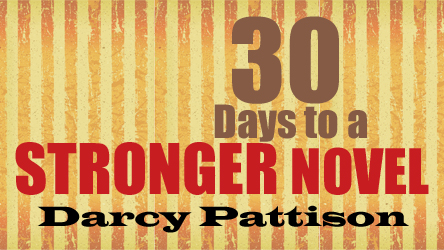
Two years ago, I wanted to write a story set in Campinas, Sao Paolo, Brazil.
I had never been there.
I only knew the name of two people who lived there.
Yet, I could convincingly write about the setting. Here’s the secret.
Google Earth
The free app, Google Earth, is immensely helpful to writers. I use the free, desktop version.
View satellite imagery, maps, terrain, 3D buildings, galaxies far in space, and the deepest depths of the ocean.
In 2011, Google Earth added the street view. They send out cars that drive along a certain road and take a 360 view of the landscape. That means you can put Google’s orange man on the street and look around. Today, the street view is available on all seven continents. See more on the background, scope and how to use Street View.
WhereisTheGoogleCar.com asks people to take a photo of the Google car when they see it and post the picture. It’s a “social experiment” to track the location of the car(s) on any given day.
Thank You, Google Earth, for Helping Me Write!
GPS Coordinates: Context.
When I wrote Abayomi, the Brazilian Puma, about a mother puma who died in a chicken coop trap near Campinas, Brazil, I was lucky enough to have an incident report that included GPS (Global Positioning System) coordinates. Google Earth immediately zoomed me into the right position, so that I was visually hovering right above the chicken coop. The context of the coop was crucial: Brazil has increased sugar cane production for use in making ethanol for automobile fuel, and the coop was nestled amidst the sugar cane fields. Pulling out some, though, it was also apparent that the sugar cane plantations were very close to large urban areas. This wasn’t a remote rural area. Instead, the pumas lived within sight of skyscrapers. How did I know this?
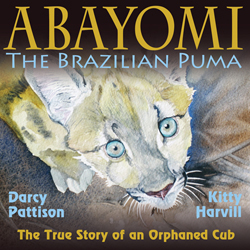
Abayomi was recently named a 2015 National Science Teacher’s Association Outstanding Science Trade Book.
Google Photos: Visual Details.
Google allows users to upload photographs that are marked with GPS information. On the maps, these are shown as tiny rectangles that when clicked open up the photos. Very near the chicken coop was such a photo that showed a skyline of skyscrapers of the city of Campinas.
Google Street Man and Maps: Topography
Google Earth also allows you to see the topography, or the terrain, of a setting. Is it hilly, flat, or somewhere in between? You can use the Street Man or simply fly around. We have a friend from India who flew us–through the miracle of Google Earth–over his parent’s house in the foothills of the Himalayas.
Distances: Measuring the Earth
I love the extra tools of Google Earth,too. For example, you can use the ruler to measure distances in kilometers or miles. I learned, for example, that a drone in a story would have to fly about 5 miles–as the crow flies. Very valuable information! I can then answer so many questions:
- Is that within a drone’s range? Yes.
- How long would the flight take, figuring 50 mph? 6 minutes.
That gives my hero a very narrow time window to locate the villain and disable the drone.
Other Options
Google Earth has in impressive area of other specialities: historical maps, Mars, the Moon, 3-D buildings, favorite places, maps about climate change and much more. See the range of services at their showcase.
I’m researching Mt. Rainier for a story: through Google Earth, I’ve gotten context, followed trails, found fantastic photos, and almost feel like I’ve been there. No, I haven’t felt the wind on my face or heard the chatter of birds. I’m adding to the Google Earth info such things as the flora/fauna of the region. I’ve hiked other areas in the Pacific Northwest, and I’ve hiked in mountainous areas. I’m pretty confident that I’ll be able to recreate this landscape for a reader. It won’t hurt to have a beta reader from the area vet it for me, but I think it will be close. For me, Google Earth is the next best thing to being on-site myself. Add to that Flickr Photos that are Creative Commons licensed, and my story take on an added weight of reality.
(Click the photos to go to the original flckr.com sites.)
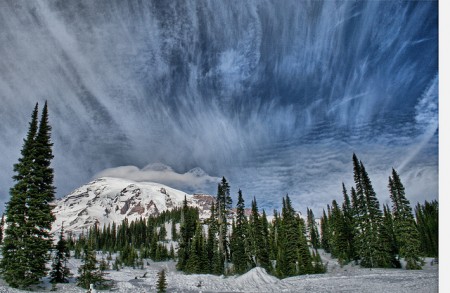
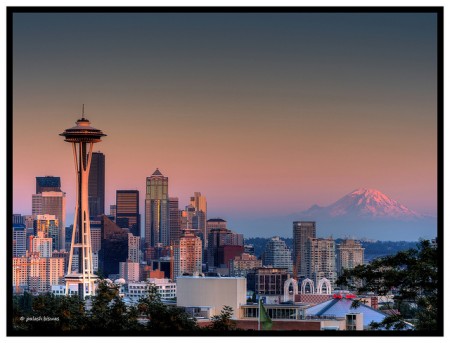
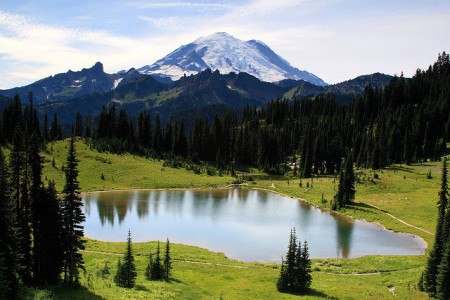
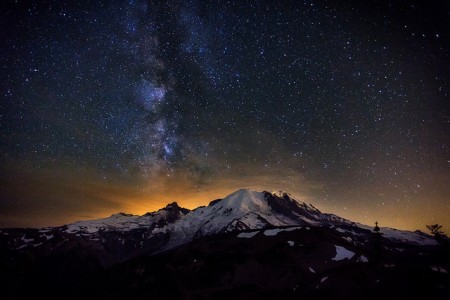

"Researching the story's environment"
By happy accident, I discovered the way to travel interstate, overseas, inter-culturally and explore the ambience of remote towns, cities, country lanes and outback outposts. Air tickets - well that's the ideal, but no, I used Google Earth.
It started with trying to locate a lovely country home in West Hougham, Kent, England by using aerial satellite and 'street view'. It was featured in Country Life for September 7th, 2000, and was the

- Inspiration for "The Dolls' House in the Forest"
inspiration for my story "The Dolls' House in the Forest".
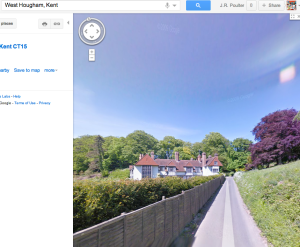
- West Hougham, Kent, country road, travelled via Google Maps street view.
I didn't find the house, but I had the most wonderfully inspiring time wandering down country lanes that were little more than wagon tracks, great boughs canopying overhead and wildflowers dotted in the fields...
Now, if I need to capture something of the 'feel' of an area. I seek out an address. Then in I go.
Exploring the
Realtor advertisements in the research area gives insight into the lifestyle and inhabitants of the town. Many homes give
a slideshow or even a video tour online.
Visualising Story
Other ways to 'get in the setting' for free include
YouTube clips. This is even a Youtube video clip on
West Hougham, Kent. Sadly, it doesn't feature that house...
Other ways to 'get in the setting' for free include Flickr, photographic collections held in State Libraries and on places like Pinterest. For historical setting, try online Heritage listings and databases for Australia and UK.
An example of other useful research sites for historic buildings in Australia -
International settings - the virtual tour
Aside from a drop in to street level via Google Earth, many online sites feature virtual tours of historic settings, buildings, rambles around towns, cities and country areas. A few examples -
Castles -
International Cities
Whatever the historic building or the town, you are quite likely to find a youtube clip or at least flicker photos, then there is always Google Earth! Have fun!
FULL ARTICLE
http://jrpoulter.wordpress.com/2012/05/20/researching-the-environment-of-story/
By happy accident, I discovered the way to travel interstate, overseas, inter-culturally and explore the ambience of remote towns, cities, country lanes and outback outposts. Air tickets – well that’s the ideal, but no, I used Google Earth.
It started with my trying to locate a lovely country home in West Hougham, Kent, England. It was featured in Country Life for September 7th, 2000, and was the
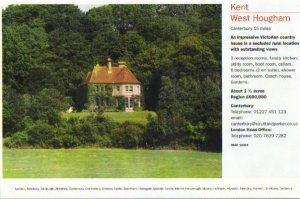
Inspiration for “The Dolls’ House in the Forest”
inspiration for my story “The Dolls’ House in the Forest”. I was fascinated by the quaintness of the architecture compared to anything out here in Oz and the size of the immense, almost regal trees forming a perfect backdrop to the house. I tried to relocate the house by doing a ‘street view’ saunter down English lanes in the vicinity. I located the area on the map and zeroed in from aerial to ‘here I am virtually walking down this street on the other side of the world the environs of which I just happen to need to explore.’
I didn’t find the house, but I had the most wonderfully inspiring time wandering down country lanes that were little more than wagon tracks, great boughs canopying overhead and wildflowers dotted in the fields…
Now, if I need to capture something of the ‘feel’ of an area. I seek out an address. Then in I go and wander around, exploring the architecture, streetscapes, lifestyles evidenced in things as random as street art, verge gardens, bus stops, signage, graffiti, shop window decor, fences or lack of, litter, strays and the bystanders to my wanderings.
I have also found that exploring the Realtor advertisements in the area I am exploring gives insight into the inhabitants of the town. Many homes give a slideshow or even a video tour online. This helps you pick up on details of life – home decor, layout, from wall hangings to cushions, scatter rugs to artwork, the placement of chairs to take in a much loved outlook, the windows and their views out, the garden.
Perhaps this sounds a little bit the voyeur. It is not the intention, far from, it is seeking faithfulness in recreating a ’feeling’ for place. It is gathering the elements of story , setting the stage, arranging a convincing backdrop to the action!





 2 Comments on Researching the environment of story, last added: 5/23/2012
2 Comments on Researching the environment of story, last added: 5/23/2012












I like it too:)